Me? I’ve Had So Many Names. Old Names That Only The Wind And The Trees Can Pronounce.




Me? I’ve had so many names. Old names that only the wind and the trees can pronounce.
More Posts from Othermanymore and Others









Dolce and Gabbana Alta Moda spring 2016 part 1
Why do artists refuse to use references why why why.
It’s not a contest to see who can get by without them. It’s not cheating to look at a thing in order to know what the thing looks like.
You don’t get stronger or better by pretending. Nobody is impressed by the awkward whatever-it-is you just drew. Use references.
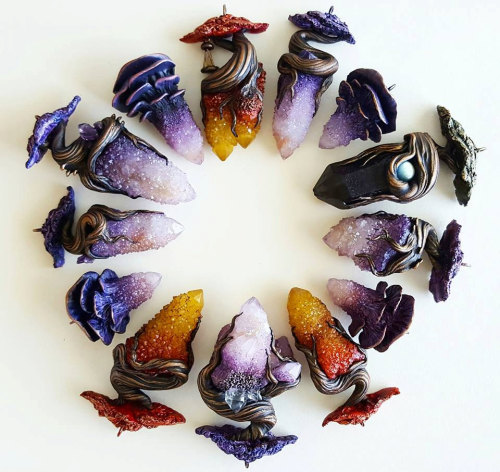
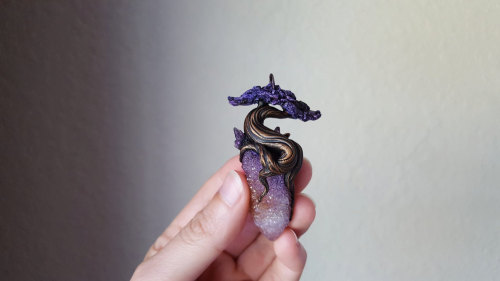
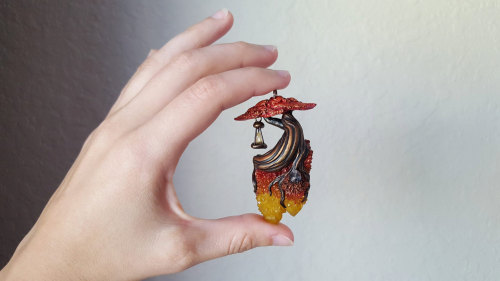
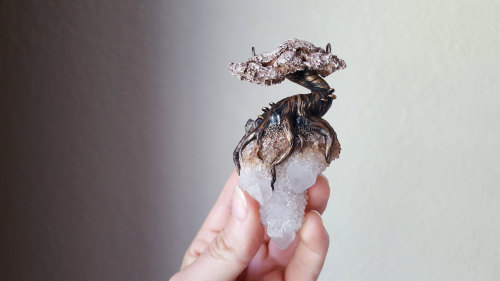
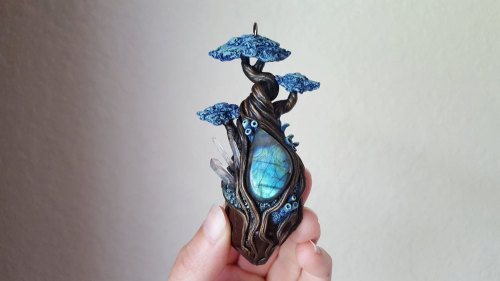
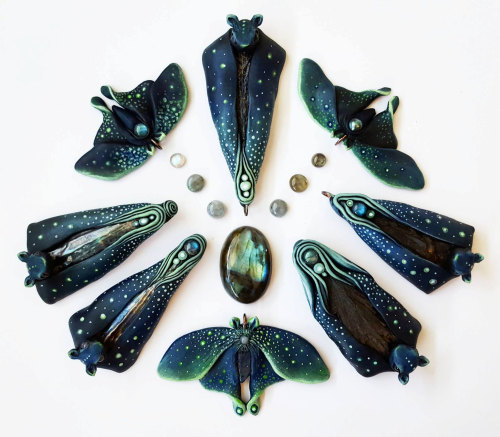
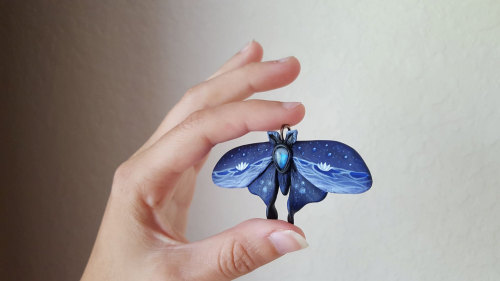
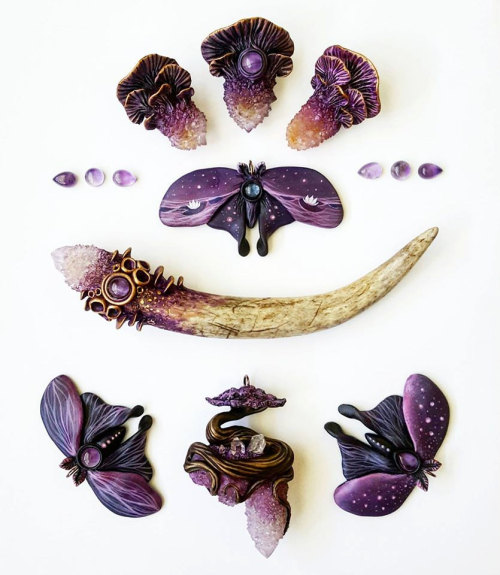
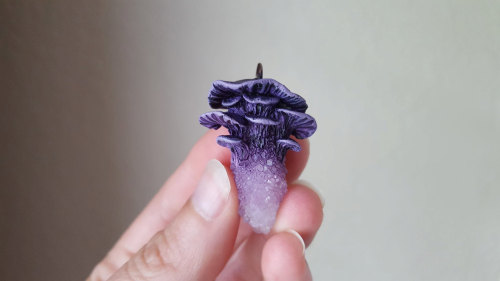
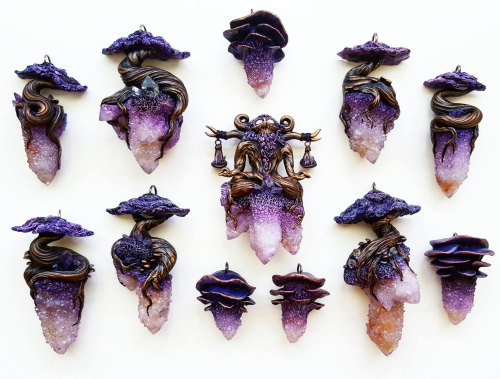
Pendants by ElementalUrchin on Etsy
• So Super Awesome is also on Facebook, Twitter and Pinterest •
Shinto 101
Hello! As someone who grew up with Shinto (along with Buddhism and Catholicism) and also currently a miko at my local shrine (of the Konkokyo branch) I figured I would like to give a basic intro to Shinto most online sources (Even books) are misinformed about or lack, or misunderstood in a Western setting. Any other Shintoists/Konkos/etc. that would like to contribute to this guide, please feel free and reblog to your heart’s content! :)

—— What is Shinto? Am I allowed to join? Are non-Japanese people who worship native Japanese gods (*kami) still considered Shinto? Shinto is not really a religion, but a system of Japanese pagan worship of the local nature/worldly deities. Basically just a system to honour the spirits of Japan and the world. People built shrines for these spirits/gods (called kami) and left offerings for blessings. Eventually, shamans began to communicate with the kami and learned more about them, and are recognized as the current kami of today. Presently, Shinto is majority traditional than spiritual in Japan. Many people only go to shrines out of tradition (Festivals/Matsuri, New Years, Weddings, etc) , an excursion, or a “good luck wish” place (Asking to pass an exam, asking for a baby, etc). Many people, even the priests or mikos at some shrines, aren’t even sure the god of that shrine really exists. But that’s not the point. The point is just to continue on tradition and go by feeling and energies of that place. Indeed, shrines are also good for the soul to visit.

However many spiritual people inside and outside of Japan still exist. These are shamans and people who can hear and feel the gods and act as their caretakers and devotees. YOU ARE ALLOWED TO BE SHINTO! ANYONE IS! :) Even if you don’t have a drop of Japanese blood in you or you’ve never even been to Japan!!!!

(Rev. Koichi Barrish, of Tsubaki America Jinja and visitors) I cannot stress this enough!!!!! Many materials on Shinto are ruined by the Western understanding of Shinto from World War II era, namely Kokka Shinto. This Shinto was Japanese propaganda to exclude foreigners. PLEASE understand, this is not true Shinto Shinto is simply the worship/reverement and appreciation of nature and/or the kami of Japan and giving them an altar/shrine and (optional) offerings. Even if you just feel close to a kami and adore them, or just feel the vibrations of nature and adore nature, you are already (or can be considered) a Shintoist! It’s as simple as that :) Many people are Shinto without realizing it.

Are only men allowed to be priests? What are miko? Men and women are allowed to be priests/priestess. They can also get married and have children! Their role is to command the rituals and maintenance of the shrine. It gets a little more complicated though.

Every shrine has a head priest. Their role is to set service dates, give special services, process requests and paperwork, prepare offerings, and overall caretake for the kami and shrine. Then, there’s associate priests who assist with these duties, and also with administrative work, such as treasurer or secretary. Sometimes in smaller shrines, these are left to a certain group of trusted laypeople to work as volunteers. After that, there’s the miko (me!). In olden days, these were women who ranked higher than the priest and could channel the gods and either be possessed (kamigakari) by, or be the mediator between god and man and deliver oracles.

I do those things now; but many miko do not. The role of a miko in modern times is simply to help clean up the inside/outside of the shrine, help serve naorai lunch and tea (lunch made from offerings), perform Kagura/Kibimai/Miko Mai sacred shrine dance offering (what I do), or sometimes even play the instruments in dance like koto or flute. (what my friends do). They also watch over omamori and ofuda that are for sale, or assist with events.

Also, as a side note, one thing Western writers write that bothers me: Virginial miko. Mikos are NOT required to be virgins, and never have. Ame-no-Uzume is the patron deity of all miko, as her dance is the origin of Kagura among other things. Ame-no-Uzume is also the goddess of revelry and sensuality, including sex. Sex is seen as a divine act and also enables one’s spiritual senses to heighten. A miko that has to be a virgin doesn’t make sense. In the end, it doesn’t matter! Mikos were virgins, some weren’t. In fact some are even married with children. (There’s no age limit either) What matters is their heart is devoted to the kami of their shrine, and has sincere intentions to caretake for that kami. How many kami are there? What exactly is a kami? Why are there shrines to kami? There is an infinite number of kami, for every little thing in the world, even man-made things. Even including yourself and your body, you are a part of kami. Some kami are more powerful in nature (have more energy) than other kami, simply because they are more ancient, a spirit of a powerful physical thing (like Amaterasu and the sun) or they receive a lot of devotion and prayer (and thus, strength and support).

A kami is not necessarily a god/deity, though commonly kami = god/deity. However, kami also can mean the spirit of a thing, or the energy surrounding a place, like the kami of a tree, is a spirit of a tree, and the kami of the sun, is the goddess of the sun Amaterasu. Kami is a complex word, but in essence the best way to understand it is the context in which it’s referred to. “The kami of the tree seems happy” - the spirit of the tree is happy “The kami of the sun is shining brightly” - the goddess of the sun is shining brightly “Kami are everywhere” - the gods/spirits are everywhere

Now, there’s titles to add onto the word “kami” - O-Kami, means “Great God” usually reserved for only powerful gods like Amaterasu-Omikami (greatest goddess) or Sarutahiko-no-Okami (Great god Sarutahiko). There’s also Kami-sama, which can either refer to a general deity, or, in my case, to Tenchi Kane no Kami, the deity that is the spirit of the universe itself. Thus, this Kami encompasses all the other kami as part of it. So it’s Kami-sama! We have shrines for kami not because they really “enshrine” in the sense the kami is cooped up in their shrine and cannot leave lol. But they act as “power spots”. In the sense the kami’s essence is felt very powerful at shrines. And/or, the kami’s spirit can travel or be split to reside in the area of these shrines. Essentially, shrines are like wi-fi hotspots, the place where you’ll feel the most connection to the kami enshrined there. Home shrines/altars work the same way. The kami’s presence will be there. Usually this is done through the power of ofuda (tablets which contain the kami’s essence or have the kami’s name which draws them towards it)

(torii - that big red gate, acts as a symbol to a more spiritual area) Do ofuda/omamori or other shrine paraphernalia really “expire”? This is a bit controversial, so bear with me, and it’s a little secret information from a miko. They do not lose their power with time. However, they are good to keep buying to support the shrine. The reason however shrines say to burn and renew them each year is not for only donations. Over time, the power does not lessen, but grows more powerful. If the owner is a layperson than does not know how to purify or bless, this ofuda/omamori can absorb other energies, and often can become a Tsukumogami (a youkai/spirit of an object) and loses the essence of the kami you want to worship. Therefore, you should only keep using an old ofuda/omamori if you yearly purify/bless it with the essence of it’s original kami. (I will explain in another post) If not, please just buy new ones! ;w;

How do I begin practicing Shinto or worshipping a kami? What do I need to do? Any special ritual? Do I need to go to a shrine? Alll you need to do is feel connected to a kami, and you practice Shinto. There is no special ritual like Baptism or Buddhist vows, (well, there’s a variation, but its absolutely not a requirement). And you do not even need to a visit a shrine in your life to be Shinto. All you need to do really is go outside and appreciate the beauty of nature. Not even that, just appreciate all you have in your home and all of your blessings. Focus on the good and positive, realize the nature of the universe, and that is practicing Shinto. If you want to get more into it, please build or set up an altar (there are home shrines called Kamidana you can buy, but they are not necessary) And use an ofuda to attract the essence of the kami. Or even just a paper with their name, or their image. At the altar, you can leave offerings or not, but common offerings are rice, salt, water, and sake. You can leave whatever you like though, as long as you offer it with sincerity (I will go more into it on a future post)

Shrines are scarce outside of Japan, but there are a surprising number. The famous one in America is Tsubaki Jinja in Washington. Let me list a few
Tsubaki Jinja, in Granite Falls, Washington
Ki-no-Mori Jinja, in Salt Spring Island, British Columbia, Canada
Shrine to Amaterasu-Omikami on Shambhala mountain center in remote Northen Colorado
Small Inari shrine in Brooklyn Botanic Garden, New York (the National Shinto association is in New York as well)
There are also a handful of shrines in Hawaii! Taken from wiki ”
Daijingu Temple of Hawaii
Hawaii Ishizuchi Jinja
Hawaii Kotohira Jinsha - Hawaii Dazaifu Tenmangu
Hilo Daijingu
Izumo Taishakyo Mission of Hawaii
Māʻalaea Ebisu Jinsha
Maui Jinsha Mission”
There are also many Konko shrines/churches (the branch I belong) all across North America, you will find a complete list here (Spans from East to West coast, across US, Canada, Hawaii, Brazil, and Korea) www.konkofaith.org* *Note of respect: While Konkokyo has origins in and worship style of Shinto, which may be good for you in terms of spirit and comfort, it is also it’s own religion. If you visit a Konko building, please be respectful and do not assert it’s a Shinto shrine! Please have an open heart and mind :) If you live in Europe, there’s a hokora (shrine foundation/worship hall) in the Netherlands, in Amsterdam. Konkokyo also has yearly London gatherings/services.

Hopefully this guide could help you be acquainted with Shintoism outside of Japan! If you have more questions, please feel free to ask me! There are also many great Shintoists already here on tumblr you can ask :)



Neelam Gill - Glamour UK November 2015
photos Pawel Psyz stylist Alessandra Steinherr hair Lyndell Mansfield makeup Polly Osmond
Hello! I have a plan to get my main character injured by the antagonist. But, since the mc lives, is it better to describe the danger or get the mc injured so he (and the audience) would have no questions about the seriousness of the antagonist?
When to Injure Your MC
If you ask many writers why they beat their characters up so much, the immediate playful answer might be “Because it’s fun!” but there is (or should be) some strategy involved in when and how you injure your main character. So before I answer the question directly, I’m going to discuss these strategies a little.
Reasons to Injure a Character:
1. To create additional challenges in a high-stakes situation
If a character’s journey has been fairly easy to far, an injury is one way to complicate things. But the only way it works is if the injury lasts long enough to really hinder them.
For instance, if you have a character that has the magical ability to heal others, then a character being injured and then healed two minutes later doesn’t create much of a challenge, nor does it heighten suspense since the character’s life was never truly in danger. So an injury that’s introduced to complicate things should take some time to recover from, and it’s usually more realistic anyway, especially when you consider the tortuous stuff we do to our MCs sometimes.
However, if you do have a healer character, and they’re currently separated from the character you injure, then a challenge is immediately presented. The injured character has to continue their journey through the injury, to either reach their destination or be reunited with the healer that can help them.
2. To foreshadow a future situation
The situation I described above, where a character is injured and then healed two minutes later, could work, if it’s being used to foreshadow the second situation I described, where the two characters are separated. Showing the healer in action early in the story can foreshadow a later complication when the healer is unable to assist their companion, whether it’s due to a separation or a sudden loss of powers.
It can also work as exposition to show the way the healer’s power works.
3. To show the antagonist’s maliciousness
The anon above suggested they injure their character to show the antagonist means business, and that definitely qualifies as a good reason to injure a character.

See, when an antagonist hurts a character - and not just an MC, but anyone - they show that they don’t care who gets in their way. They want what they want, and in their opinion, the ends justifies the means. Even when a character isn’t necessarily in their way, and they do it for pleasure, it tells a reader a great deal about the antagonist’s psyche, and how far they’ll go to further their own agenda.
My only caution here is to be wary of how often you’re using this reason. Often times it becomes easy to justify an antagonist’s plan by saying “They’re evil and they enjoy torturing people.” But villains who are evil just for the pure enjoyment of it grow uninteresting and predictable quickly. So despite the pleasure they get out of hurting people, they must have some greater scheme in front of them. Some ultimate gain that they’re hoping to achieve. A combination of these two things can breed a fascinating antagonist.
4. To deepen a character bond or relationship
Injuries or illness are great opportunities to write a dynamic where one character is taking care of another, showing how close the two characters are, and how attentively they’ll care for the other. But this dynamic is most compelling when it’s a reversal, such as a little brother taking care of an older one, or when someone who the protagonist has built up to be invincible is suddenly sidelined and needs the protagonist’s help.
Like the previous reason, i would just be careful how frequently this occurs. Situations like these are more effective when they’re big, and they last long term, rather than several smaller instances where a character keeps getting hurt and cared for.
There may be other reasons out there to justify injuring a character that I haven’t thought of here, but I can surely tell you one reason not to:
Avoid injuring a character purely for the fun of it.
Now listen, what you do in your own private writing universe is your own business, and if you want to put your characters through hell because it’s fun, I commend you for finding so much joy in the process of writing and I encourage you to keep at it. But when it comes to finding an audience, and telling a cohesive, well-paced, well-plotted story, you gotta start considering each move you make as a writer, and ask yourself if each plot point needs to be there.
Back to the anon…
Now that I’ve gone into all this detail, let me get back to the specific question that the anon asked. Since the character ultimately lives, is it better to just show the possible danger, or to actually have the antagonist injure them to show they’re serious?
My answer to you would be that you could injure the character, since your reasoning falls within the reasons I listed here (reason #3), and it would be even better if it qualified for two reasons, such as delaying their progress to achieve their goal (reason #1) or repairing a strained relationship when a companion must take care of them (reason #4).
Your argument that the character lives (so why bother?) ignores the need for conflict in a story. Readers appreciate conflict, as long as there are logical reasons for it, and if you consider these reasons I discussed, you should be in great shape.
However, I think that you could show your antagonist’s malicious intentions without injuring the character, if you felt the injury would be too much for an already conflict-heavy plot. The antagonist might show anger/violence towards the people working for them (out of frustration), or even to innocent bystanders, or other minor characters whose fates we’re not as tied up in. So I think there are still options for you if you wanted to avoid an injury.
-Rebekah


The Fukang Meteorite
The Fukang meteorite, believed to be some 4.5 billion years old, which is as ancient as Earth itself, was unearthed near a town of the same name in China, in 2000. It is a pallasite, a type of meteorite with translucent golden crystals of a mineral called olivine embedded in a silvery honeycomb of nickel-iron. It’s a gorgeous meteorite, and possibly the most stunning extraterrestrial piece of rock man has ever seen.
The Fukang meteorite was found by a hiker. The man had often stopped and had lunch on this giant rock, and he always wondered what the metal and crystals were. He finally took a hammer and chisel and broke some pieces off, which he sent to the USA to confirm that it was a meteorite.
The original meteorite weighted just over a thousand kilogram, but the rock was so brilliant that everybody wanted a piece of it. Since then it has been divided into dozens of thin slices and auctioned or distributed around the world. (Source)
-
 manedwolfblood liked this · 4 months ago
manedwolfblood liked this · 4 months ago -
 dreamingnaiad reblogged this · 1 year ago
dreamingnaiad reblogged this · 1 year ago -
 enchanted-arts liked this · 1 year ago
enchanted-arts liked this · 1 year ago -
 the-dreaming-princess reblogged this · 1 year ago
the-dreaming-princess reblogged this · 1 year ago -
 the-dreaming-princess liked this · 1 year ago
the-dreaming-princess liked this · 1 year ago -
 unknown--martyrs liked this · 1 year ago
unknown--martyrs liked this · 1 year ago -
 welcome-home-nyx reblogged this · 1 year ago
welcome-home-nyx reblogged this · 1 year ago -
 mysoftboybensolo reblogged this · 2 years ago
mysoftboybensolo reblogged this · 2 years ago -
 unicornskulls liked this · 2 years ago
unicornskulls liked this · 2 years ago -
 evindelminn liked this · 5 years ago
evindelminn liked this · 5 years ago -
 amatthewz reblogged this · 5 years ago
amatthewz reblogged this · 5 years ago -
 swansandslayers reblogged this · 6 years ago
swansandslayers reblogged this · 6 years ago -
 dakaisworld reblogged this · 6 years ago
dakaisworld reblogged this · 6 years ago -
 dakaisworld liked this · 6 years ago
dakaisworld liked this · 6 years ago -
 sant89 liked this · 6 years ago
sant89 liked this · 6 years ago -
 thesterlingaffair reblogged this · 6 years ago
thesterlingaffair reblogged this · 6 years ago -
 thesterlingaffair liked this · 6 years ago
thesterlingaffair liked this · 6 years ago -
 erlkonigtraum reblogged this · 6 years ago
erlkonigtraum reblogged this · 6 years ago -
 darkboygay reblogged this · 6 years ago
darkboygay reblogged this · 6 years ago -
 darkboygay liked this · 6 years ago
darkboygay liked this · 6 years ago -
 hvit-fjaer reblogged this · 7 years ago
hvit-fjaer reblogged this · 7 years ago -
 catandgorgon reblogged this · 7 years ago
catandgorgon reblogged this · 7 years ago -
 markgoudief liked this · 7 years ago
markgoudief liked this · 7 years ago -
 salsafrattale liked this · 7 years ago
salsafrattale liked this · 7 years ago -
 rachrachrach reblogged this · 7 years ago
rachrachrach reblogged this · 7 years ago -
 quiet-hubris reblogged this · 7 years ago
quiet-hubris reblogged this · 7 years ago -
 shadwflyer liked this · 7 years ago
shadwflyer liked this · 7 years ago -
 ree-duh liked this · 7 years ago
ree-duh liked this · 7 years ago -
 spagaytti-sauce-blog liked this · 7 years ago
spagaytti-sauce-blog liked this · 7 years ago -
 livncosplay liked this · 7 years ago
livncosplay liked this · 7 years ago -
 lishdfish liked this · 7 years ago
lishdfish liked this · 7 years ago -
 gay-loser-tibalt liked this · 7 years ago
gay-loser-tibalt liked this · 7 years ago -
 cowboyvampyr reblogged this · 7 years ago
cowboyvampyr reblogged this · 7 years ago -
 lonelymuse liked this · 7 years ago
lonelymuse liked this · 7 years ago -
 undeejellyfish liked this · 7 years ago
undeejellyfish liked this · 7 years ago -
 cowboyvampyr reblogged this · 7 years ago
cowboyvampyr reblogged this · 7 years ago -
 liriah liked this · 7 years ago
liriah liked this · 7 years ago -
 ludiart liked this · 7 years ago
ludiart liked this · 7 years ago -
 vicdin liked this · 7 years ago
vicdin liked this · 7 years ago -
 vidarrsaber liked this · 7 years ago
vidarrsaber liked this · 7 years ago



